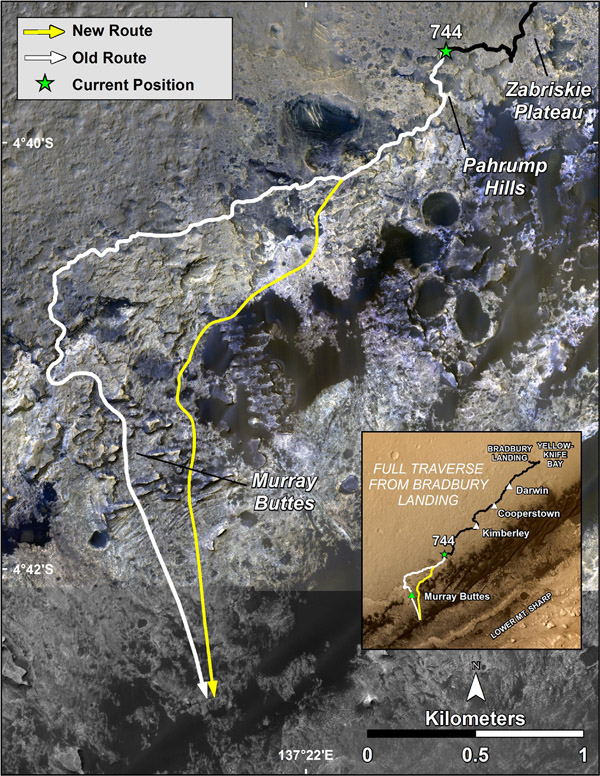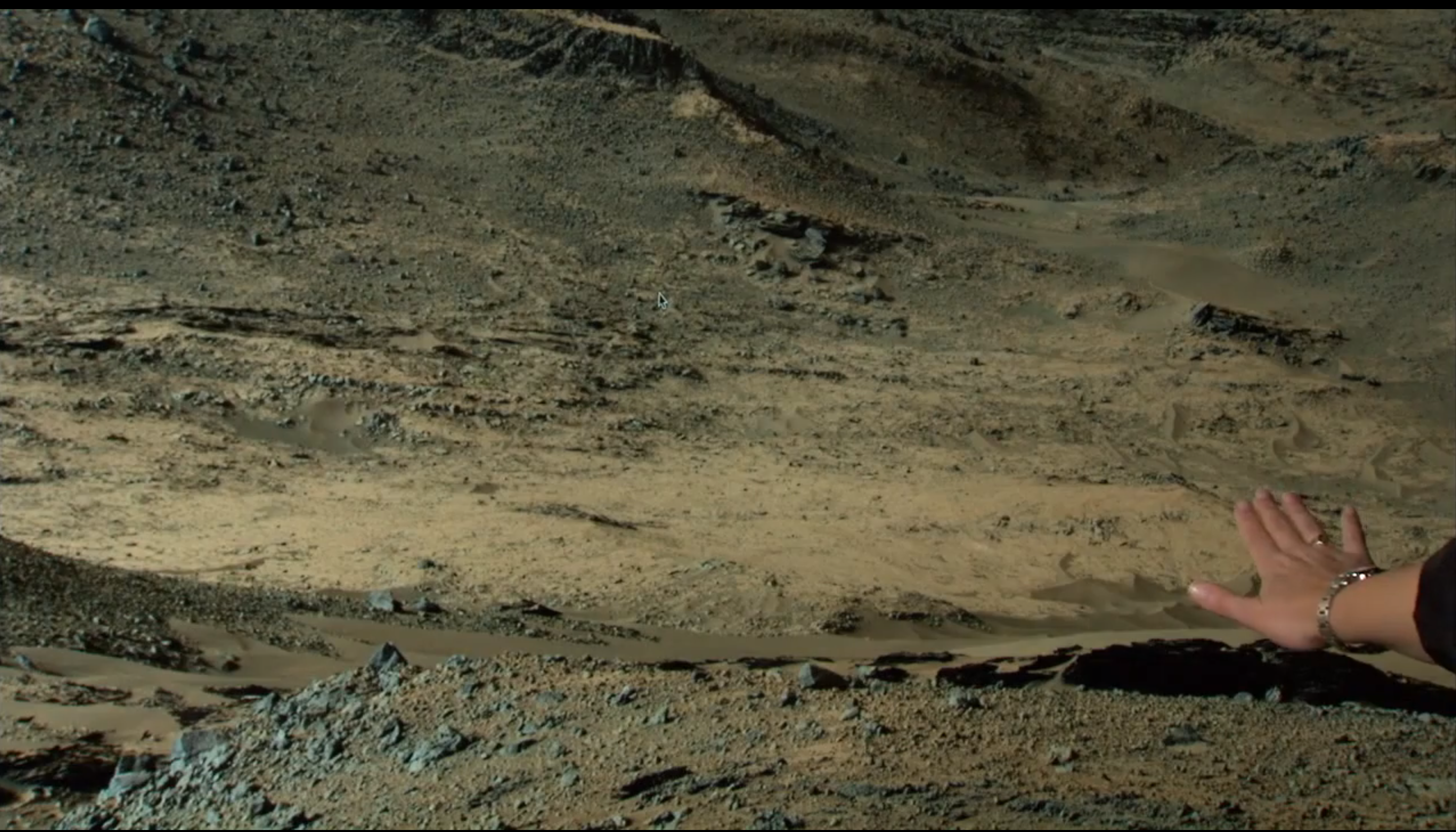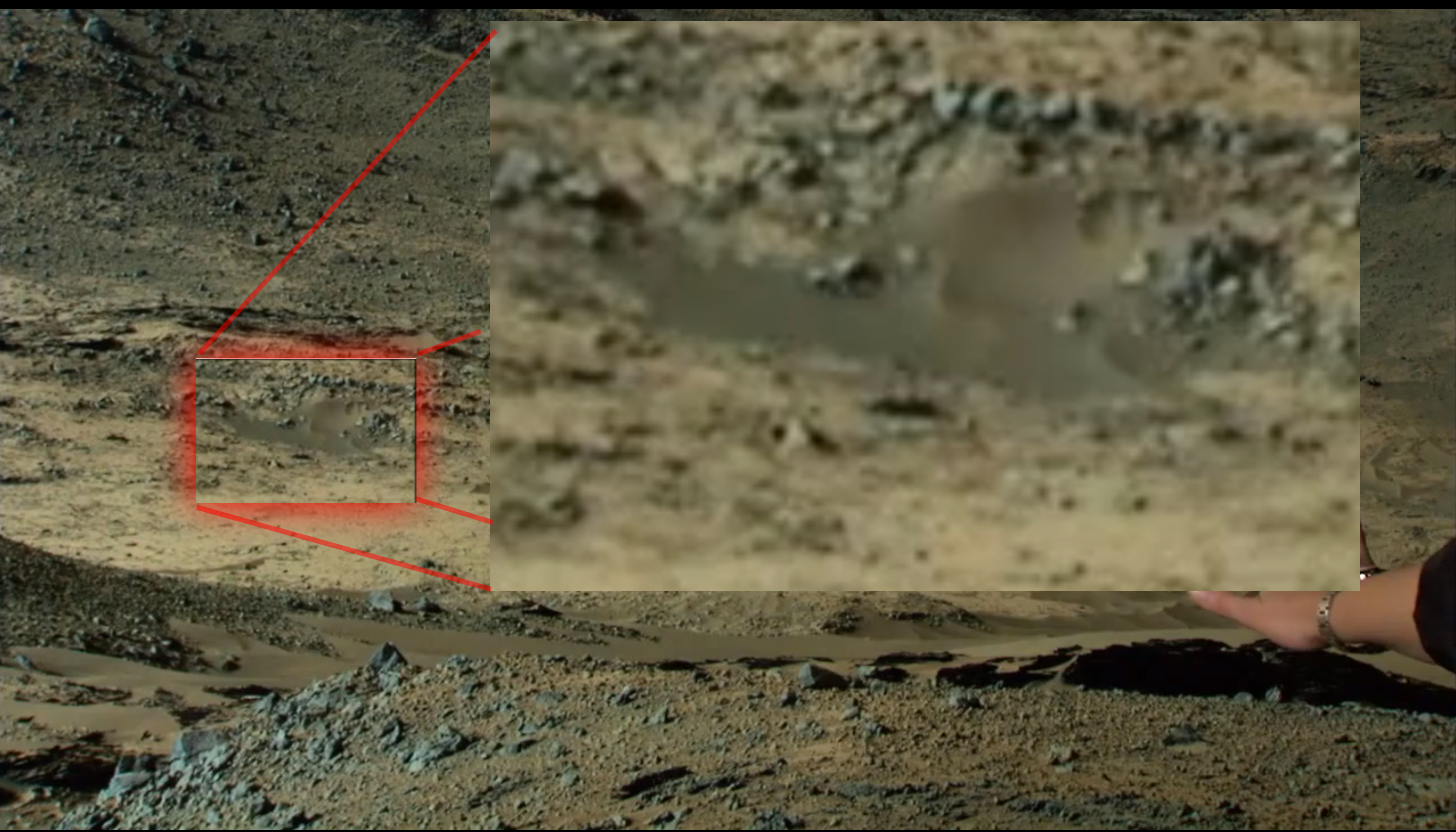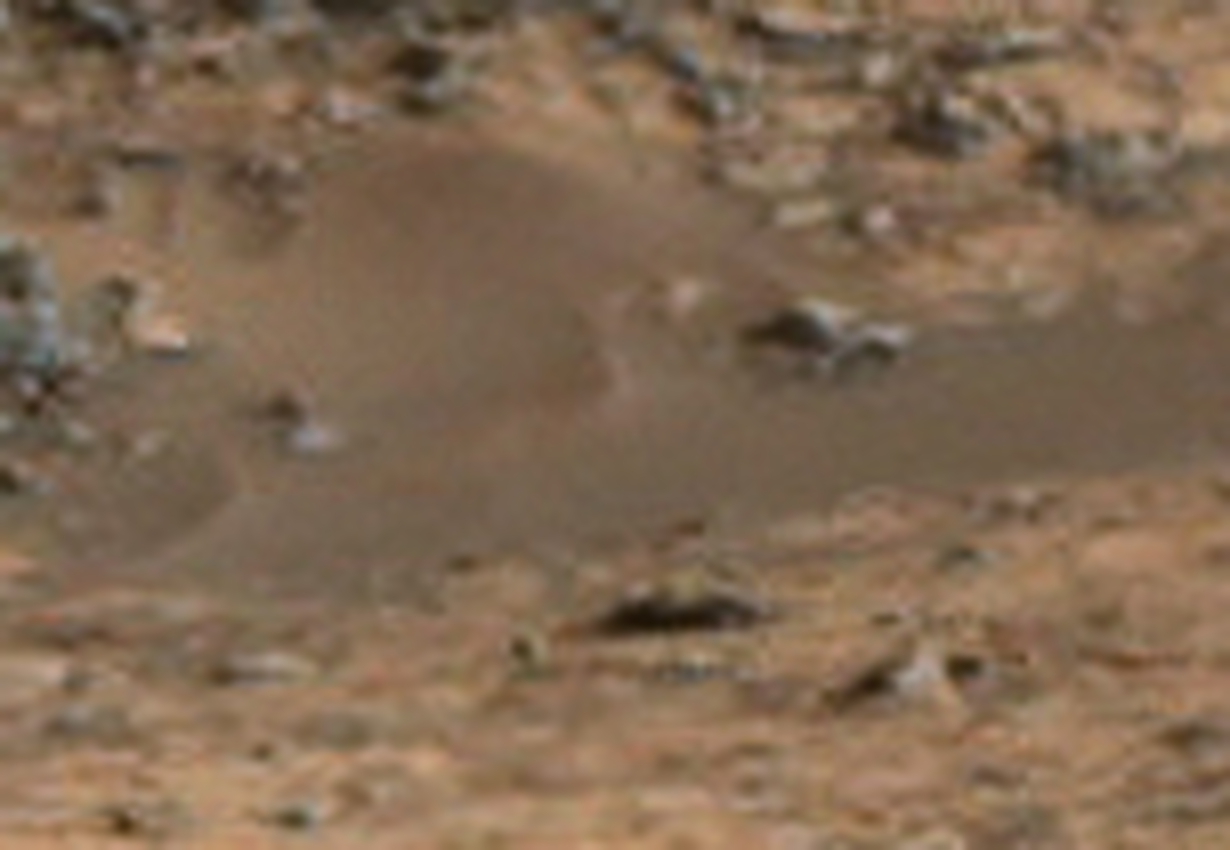It looks like you're using an Ad Blocker.
Please white-list or disable AboveTopSecret.com in your ad-blocking tool.
Thank you.
Some features of ATS will be disabled while you continue to use an ad-blocker.
19
share:
After more than two years of roving almost 9 km (about 5.5 miles), the Curiosity rover has finally reached its general target destination of Mount
Sharp (officially known as "Aeolis Mons").
There is still much roving to do around and up Mount Sharp, but mission planners considered the mountain, along with its walls and canyons of exposed strata, to be the prime target for the rover. The lines of strata (many of which may have been deposited by water) can help geologists investigate what mars was like over the billions of years that these deposits were laid down -- perhaps even during times when mars was a place that was mach more habitable for life.
Curiosity Reaches Mount Sharp to Look for Life's Niches
EDIT TO ADD:
Mission planners have also recently revised the path of the rover's planned initial investigation of the mountain. Based on information they have learned about the topography, they will be heading up the mountain a bit sooner than planned (up a place named 'Pahrump Hills"), but still passing near to the originally-planned entry point "Murray Buttes". This new route still takes them through areas of deposits that seem to have been washed down from the mountain.

NASA’s Mars Curiosity Rover Arrives at Martian Mountain
There is still much roving to do around and up Mount Sharp, but mission planners considered the mountain, along with its walls and canyons of exposed strata, to be the prime target for the rover. The lines of strata (many of which may have been deposited by water) can help geologists investigate what mars was like over the billions of years that these deposits were laid down -- perhaps even during times when mars was a place that was mach more habitable for life.
Curiosity Reaches Mount Sharp to Look for Life's Niches
EDIT TO ADD:
Mission planners have also recently revised the path of the rover's planned initial investigation of the mountain. Based on information they have learned about the topography, they will be heading up the mountain a bit sooner than planned (up a place named 'Pahrump Hills"), but still passing near to the originally-planned entry point "Murray Buttes". This new route still takes them through areas of deposits that seem to have been washed down from the mountain.
Curiosity’s trek up the mountain will begin with an examination of the mountain's lower slopes. The rover is starting this process at an entry point near an outcrop called Pahrump Hills, rather than continuing on to the previously-planned, further entry point known as Murray Buttes. Both entry points lay along a boundary where the southern base layer of the mountain meets crater-floor deposits washed down from the crater’s northern rim.
"It has been a long but historic journey to this Martian mountain,” said Curiosity Project Scientist John Grotzinger of the California Institute of Technology in Pasadena. “The nature of the terrain at Pahrump Hills and just beyond it is a better place than Murray Buttes to learn about the significance of this contact. The exposures at the contact are better due to greater topographic relief."

NASA’s Mars Curiosity Rover Arrives at Martian Mountain
edit on 9/12/2014 by Soylent Green Is People because: (no reason given)
Fantastic! I'm excited to see the new findings that Curiosity will bring us. Perhaps some evidence of microbial life?
Just throwing this out there: even though human spaceflight is entirely more expensive and complex, having some boots on the ground on Mars would allow much more exploration and science to be done in a much quicker manner.
Food for thought.
Just throwing this out there: even though human spaceflight is entirely more expensive and complex, having some boots on the ground on Mars would allow much more exploration and science to be done in a much quicker manner.
Food for thought.
Is it just me or did they blur something out in the photo... in the video she starts by pointing strait at it... lol.

edit to add...
Yep! definitely blurred lol...


edit to add...
Yep! definitely blurred lol...

edit on 13-9-2014 by pianopraze because: added photo
I love how scientists always qualify their statements with: "our study is only just beginning"...
Job security at it's finest...lol
Job security at it's finest...lol
a reply to: pianopraze
Nope. Definitely a pile of dust. Just like many others.
mars.jpl.nasa.gov...
Yep! definitely blurred lol...
Nope. Definitely a pile of dust. Just like many others.
mars.jpl.nasa.gov...
edit on 9/13/2014 by Phage because: (no reason
given)
I guess this headline is akin to the "Voyager has left the Solar System" headline - it's debatable and is based on arbitrary factors. (The Voyager
hasn't even reached Sedna's average distance from the Sun)
It might be another year before Curiosity is actually climbing the slopes of Mt Sharp.
However, every little headline-worth achievement helps, even if Curiosity has only reached the very edges of Mt Sharp's outlying slopes.
It might be another year before Curiosity is actually climbing the slopes of Mt Sharp.
However, every little headline-worth achievement helps, even if Curiosity has only reached the very edges of Mt Sharp's outlying slopes.
a reply to: wildespace
Yes, they are taking liberties with the exact boundary of what they are calling Mount Sharpe. Lots of sandy areas ahead, and the Rover actually hasn't entered the Buttes as yet. I'm not sure if mountains on Earth are measured this way, with their vast outlying edges defined as part of the mountain themselves.
Yes, they are taking liberties with the exact boundary of what they are calling Mount Sharpe. Lots of sandy areas ahead, and the Rover actually hasn't entered the Buttes as yet. I'm not sure if mountains on Earth are measured this way, with their vast outlying edges defined as part of the mountain themselves.
originally posted by: wildespace
I guess this headline is akin to the "Voyager has left the Solar System" headline - it's debatable and is based on arbitrary factors. (The Voyager hasn't even reached Sedna's average distance from the Sun)
It might be another year before Curiosity is actually climbing the slopes of Mt Sharp.
However, every little headline-worth achievement helps, even if Curiosity has only reached the very edges of Mt Sharp's outlying slopes.
I think Voyager leaves the Solar system every 6 months these days...
edit on 16-9-2014 by Xeven because: (no reason given)
new topics
-
What Is 'Quad Demic'? Mask Mandate Returns In These US States
Diseases and Pandemics: 30 minutes ago -
The Future of fashion .
Social Issues and Civil Unrest: 1 hours ago -
Bin Cyber Junk…
Short Stories: 1 hours ago -
The Undertones - Teenage Kicks
Music: 2 hours ago -
Volcano Watch 2025
Fragile Earth: 2 hours ago -
Judge rules president-elect Donald Trump must be sentenced in 'hush money' trial
US Political Madness: 11 hours ago
top topics
-
NJ Drones tied to Tesla explosion at Trump Las vegas
General Conspiracies: 13 hours ago, 10 flags -
New Jersey-Teachers Can Now Be Certified Without Passing Basic Reading Writing Math Testing
Education and Media: 17 hours ago, 9 flags -
Judge rules president-elect Donald Trump must be sentenced in 'hush money' trial
US Political Madness: 11 hours ago, 4 flags -
Volcano Watch 2025
Fragile Earth: 2 hours ago, 4 flags -
The Future of fashion .
Social Issues and Civil Unrest: 1 hours ago, 3 flags -
What Is 'Quad Demic'? Mask Mandate Returns In These US States
Diseases and Pandemics: 30 minutes ago, 3 flags -
Farmers wife
Music: 12 hours ago, 2 flags -
The Undertones - Teenage Kicks
Music: 2 hours ago, 1 flags -
Bin Cyber Junk…
Short Stories: 1 hours ago, 1 flags
active topics
-
Paranoid Liberals Believe U.S. Service Members are More Dangerous than Illegal Aliens.
Social Issues and Civil Unrest • 44 • : WeMustCare -
NJ Drones tied to Tesla explosion at Trump Las vegas
General Conspiracies • 20 • : fringeofthefringe -
What Is 'Quad Demic'? Mask Mandate Returns In These US States
Diseases and Pandemics • 3 • : Kaiju666 -
Tesla Cybertruck Explodes in Front of Trump Hotel in Las Vegas
Mainstream News • 215 • : WeMustCare -
The Future of fashion .
Social Issues and Civil Unrest • 7 • : BeyondKnowledge3 -
Nigel Farage's New Year Message.
Politicians & People • 20 • : angelchemuel -
Musk calls on King Charles III to dissolve Parliament over Oldham sex grooming gangs
Mainstream News • 97 • : Oldcarpy2 -
Volcano Watch 2025
Fragile Earth • 2 • : angelchemuel -
The Undertones - Teenage Kicks
Music • 1 • : ColeYounger2 -
Labour's Anti-Corruption Minister Named in Bangladesh Corruption Court Papers
Regional Politics • 8 • : angelchemuel
19


